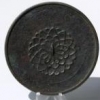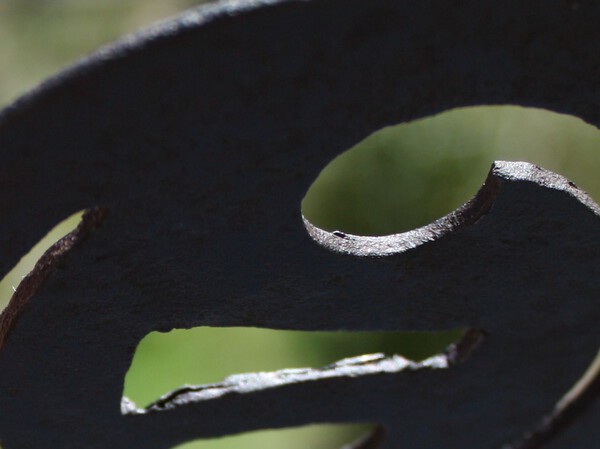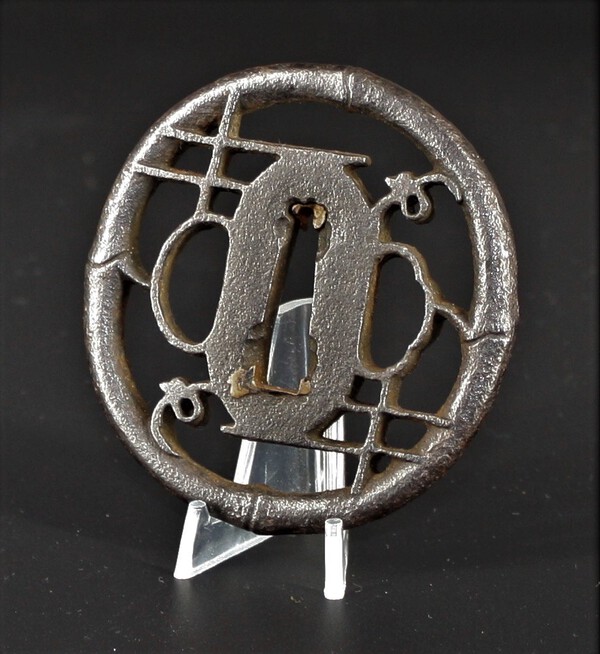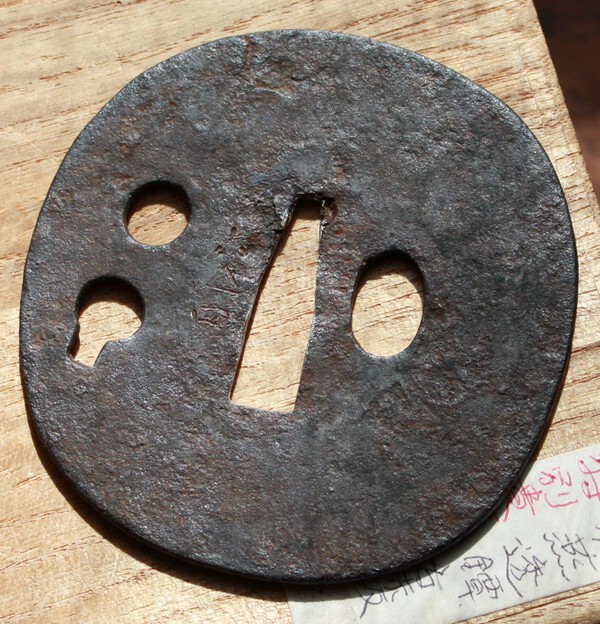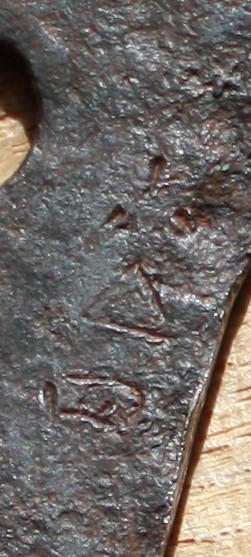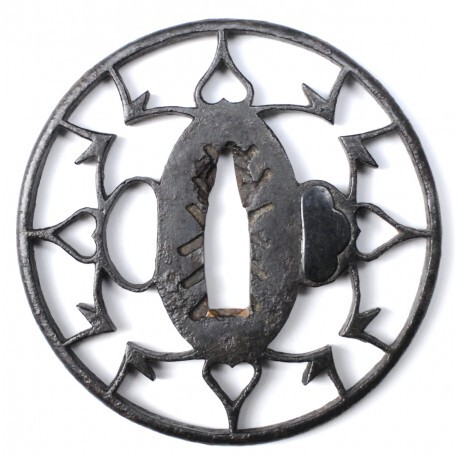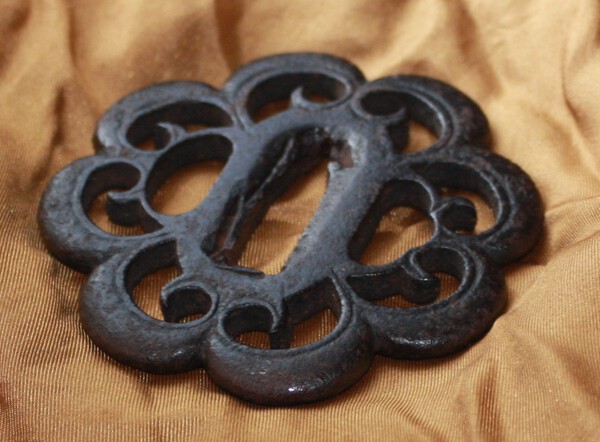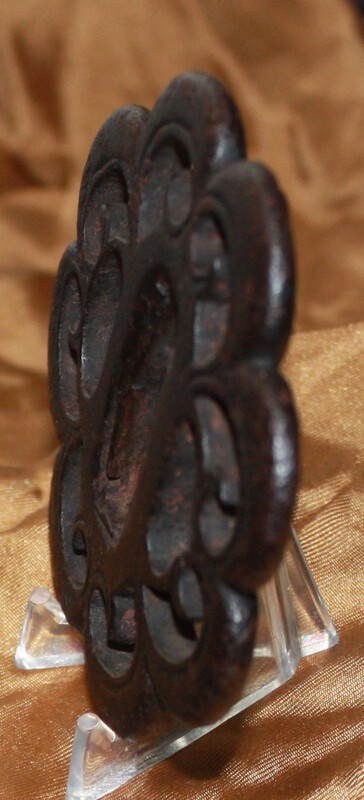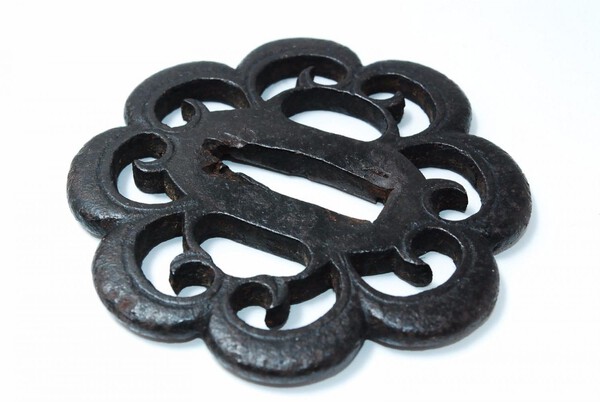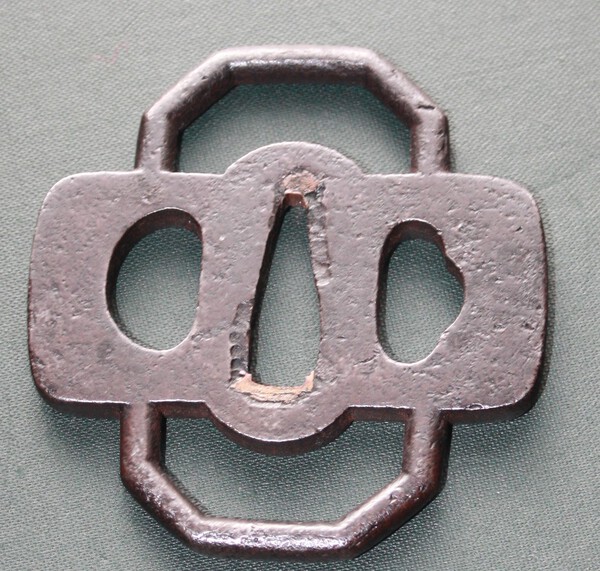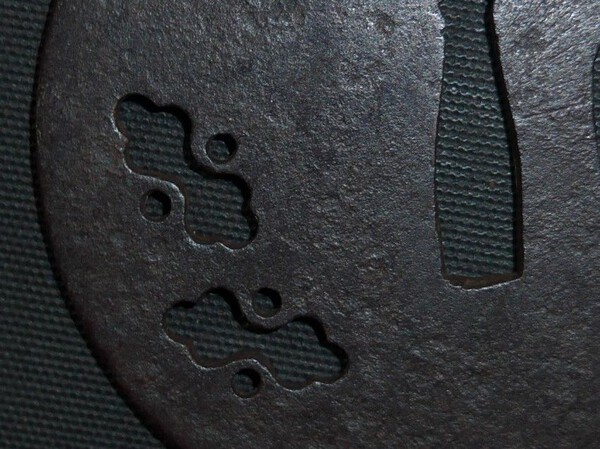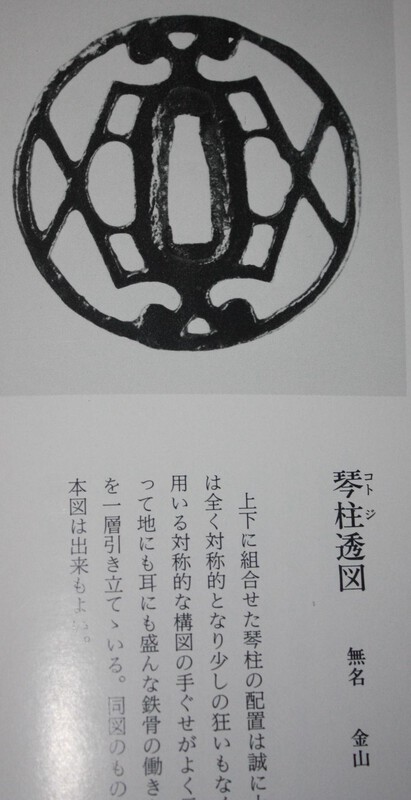-
Posts
290 -
Joined
-
Last visited
Content Type
Profiles
Forums
Events
Store
Downloads
Gallery
Everything posted by johnnyi
-
Ah Jean ,that is what I want to know; who has actually seen such a fake (with folding, etc.) rather than just speculate that they may be there? Is folding iron so as to produce NO separation on the rim BUT separation on the walls of a Nakago ana an easy task? Why would such effort be put into a tsuba that would probably never rise to the level of being worth it? I ask all this because someone told me it was fake, but I couldn't get a convincing reason other than cheap steel. Regards, Johni p.s. hello Richard
-
This is kind of a toughy, because you won't have much to go on except the mechanics of the tsuba. Patina seems to have been subjected to either corrosion and possible cleaning (or something more nefarious) at some point and can't be accurately judged properly. There are features though which might lock this down as real or fake, but I need the help of a real expert (hello Ford) or experts to know. If it's fake it is fake and if it is real it old old. Thanks for your help on this one. Tsuba measures: 85.8 mm tall 85.5 mm wide 2. -2.2 mm 1/8 to 1/4 inch from edge 2.4 mm- 2.6 mm area within the tomo and including seppa dai The edge is slightly rounded, and the sukashi walls are fairly sharp, (they are a puzzle, as you sometimes see this sharp knife edge on edges of corroded iron where the interior of the plate has wasted away a bit more than the surface-maybe this is due to a preserving effect of patina?)) The pictures I hope are helpful, but they probably won't be useful unless blown up to "screen background" where the detail is visible. This may very well be a fake. But why would so much effort be put into forging the iron to the point of tapering the thickness? Why would the delamination appear where it has (mostly at nakago ana, and one other tiny spot) on a new product? Has anyone else found a fake that has these properties?
-
Interesting. We used to call this sour grass back on the farm in Pennsylvania. If you chewed the stems it tasted like lemons. Nice on a hot day. Thanks for posting this johni
-
Could someone tell me what school and time period this would fall into? Thank you p.s. I realize tsuba is awful, just want to learn what school Johni
-
It sure is impressive Sergei. Do you suppose the little blob to the right of the three circles was a repair of some kind made during manufacture? I hope you can show more pictures, especially from different angles towards the sukashi walls. I like your tsuba a lot . Johni
-
Thanks Jean. It is remarkably thin with obvious folding (and delaminations). The only tsuba in Sasano I can find which conform to these measurements, and parina, are the earliest ko tosho. Although it is obvious, I guess it is important to mention that the mei is on the verso. Its interesting what you['ve observed, that part of he mei might be a number, as I would imagine that if the tsuba is as old as I suspect, a signed "name " would be very unusual? johni
-
Tsuba seems to be quite old, measuring 79 mm tall by 76.3 mm wide. about 2.1-2.2 thick near rim, 2.4 mm to about 2.6 mm seppa dai. A translation and any conclusions on the mei being original would be greatly appreciated. Thanks Johni
-
Thank you Kristian and Kyle. It is interesting to see the similarities. After seeing them both, it seems that mine might be a cruder version of Kristian's Heianjo with only the design in common? What appear to be channels carved into the inner portion of each frond on mine are actual a bit of an illusion, and in fact the thin arching inner band on each frond drops off to an ever thinner outer part, so there is no channel for the brass to lay into .
-
Thank you gentlemen. Would mid Edo be a fair guess to age? Regards, Johni
-
Hi Henry. I might be wrong, but I think the seppa dai might broaden as the tsuba enters the later edo period? Here is one for example from edo that is certified
-
Could sukashi possibly represent the 16 petal chrysanthemum (or the mix of sword tip and chrysanthemum you sometimes see on Buddhist tsuba? johni
-
Hello. Hopefully I can get some help identifying this school and what period? It is forged iron with fine tekkotsu on "petals". It measures roughly 69.9 mm tall by 68.5 mm wide Petals average 4.6 to 4.7 mm at their thickest Seppa dai measures roughly 5.7 mm Thanks in advance for any help you can give (and please concentrate your efforts on Vajo's tsuba first....he was here before me ) Thanks, Johni
-
Hi Grev, Nihontocraft also had such a tsuba. I believe the Ashmolean might have one which they describe as cruciform also. The Peabody Museum has a variation of the design which they too call cruciform, and attribute to Satsuma and the Island of Kyushu ("stronghold of Christian faith"). Here's a bad picture of mine which Robert Haynes attributed to Bushu 1700. It seems the key is to find an actual lock that is similar. I haven't found one but hopefully someone here can. Regards, Johni
-
Thank you Robert, (and others). After considering your post it is hard to understand why there would be two vajras rather than one, and it does seem now that these two objects might be in opposition to one another. Maybe they are insects, maybe bats? Regards, Johni.
-
I enjoyed looking at your pictures Robin. I am curious about the udenuki ana; I sometimes see the ones with this udenuki ana ascribed to Satsuma. Is there any real connection? Thanks Johni
-
At the top of picture #1 (1 o clock) is that thin line delamination? (or a fold) Is it my eyes, or is there also faint evidence of shiguri yasuri which has worn away? Johni
-
Yes, agreed Henry, maybe something else, however the amida yasuri adds force to yours and George's argument of a Buddhist connection I think. Thanks again, John
-
Ah, thank you Henry. You are the second person to suggest the Vajra , Richard George being the first . That makes it unanimous (2 people is unanimous I think ) Thank you both, Regards, John
-
-
p.s. if you don't have a copy of OTM you can find the similar theme in Grev's book Birmingham Museum..., page 6 #1930 John I
-
Possibly koto bridges (see Owari to Mikawa 231, 232) Regards, John I
-
Grev, I.m really looking forward to the new book! Your first one is a wonderful resource (with great pictures!) which has become well worn now from constant use! Can't wait for the new one! Regards, Johni
-
Thanks Steve. It is a circular (ring) tsuba so that makes sense. just noticed...spacing works..hurray! Johni
-
My windows10 is still preventing spaces so i'll keep this short...... thanks johni (Edited by Admin to add spaces)
-
Although I am not prepared to buy right now, I wish you the best of luck on your sale. I enjoyed reading the test about your life, and in particular, found the middle paragraph poignant and poetic. Again, best of luck and Merry Christmas. p.s. you might want to ad something about shipping and payment method Kind regards, Johni


